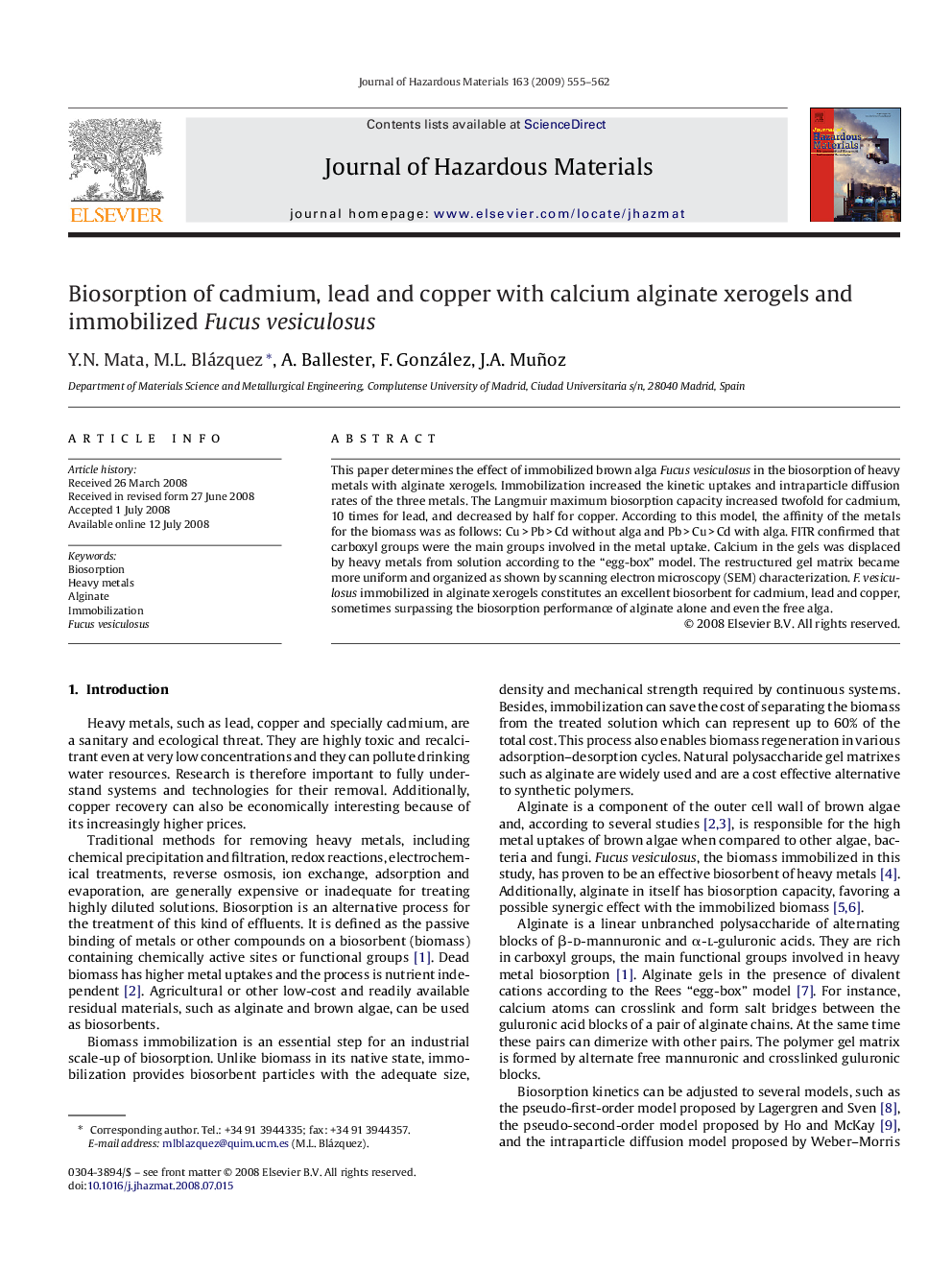| Article ID | Journal | Published Year | Pages | File Type |
|---|---|---|---|---|
| 582093 | Journal of Hazardous Materials | 2009 | 8 Pages |
Abstract
This paper determines the effect of immobilized brown alga Fucus vesiculosus in the biosorption of heavy metals with alginate xerogels. Immobilization increased the kinetic uptakes and intraparticle diffusion rates of the three metals. The Langmuir maximum biosorption capacity increased twofold for cadmium, 10 times for lead, and decreased by half for copper. According to this model, the affinity of the metals for the biomass was as follows: Cu > Pb > Cd without alga and Pb > Cu > Cd with alga. FITR confirmed that carboxyl groups were the main groups involved in the metal uptake. Calcium in the gels was displaced by heavy metals from solution according to the “egg-box” model. The restructured gel matrix became more uniform and organized as shown by scanning electron microscopy (SEM) characterization. F. vesiculosus immobilized in alginate xerogels constitutes an excellent biosorbent for cadmium, lead and copper, sometimes surpassing the biosorption performance of alginate alone and even the free alga.
Related Topics
Physical Sciences and Engineering
Chemical Engineering
Chemical Health and Safety
Authors
Y.N. Mata, M.L. Blázquez, A. Ballester, F. González, J.A. Muñoz,
